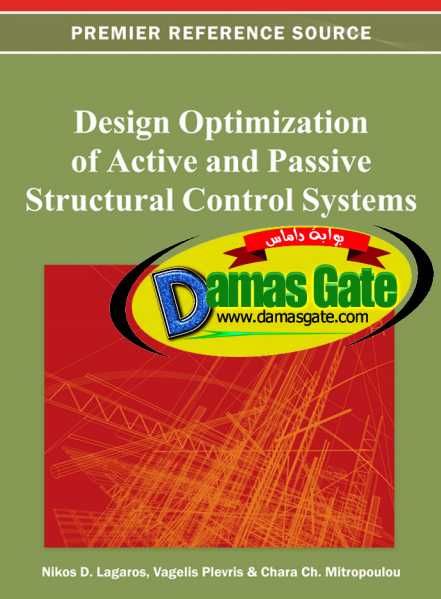Design Optimization of Active and Passive Structural Control Systems

Editorial Advisory Board
Gian Paolo Cimellaro, Politecnico di Torino, Italy
Ricardo O. Foschi, University of British Columbia, Canada
Hitoshi Furuta, Kansai University, Japan
Jamshid Ghaboussi, University of Illinois at Urbana-Champaign, USA
Chris P. Pantelides, University of Utah, USA
Eysa Salajegheh, University of Kerman, Iran
Mauricio Sánchez-Silva, Universidad de Los Andes, Colombia
George E. Stavroulakis, Technical University of Crete, Greece
Dimitrios Vamvatsikos, National Technical University of Athens, Greece
BACKGROUND
The seismic response of structures subjected to earthquake excitations may be effectively reduced by incorporating any of various kinds of available passive energy dissipation devices (Soong and Dargush 1997). Numerous are the studies related to optimal placement and capacity of damping coefficient for linear multistory buildings.
Tsuji and Nakamura (1996) proposed an algorithm that finds the optimal story stiffness distribution and the optimal damper distribution for a shear building model subjected to a set of spectrum-compatible earthquakes, but it requires high computational afford because it is necessary to run dynamic analysis and include artificial constraints like the upper bound of the damping coefficients.
Nakamura et al.
Download
http://s18.alxa.net/s18/srvs2/02/001...ol.Systems.rar